You are in Japan for the New Year and want to learn about the Japanese New Year’s customs?
Or you want to know what Japanese people often do when visiting a shrine or temple in the New Year?
In this article, I will introduce about Hatsumōde, the Japanese custom of visiting a shrine or temple in the New Year, along with interesting activities when going to Hatsumōde.
Please read through to experience Hatsumōde more fully.
Hatsumōde – The Japanese custom of visiting a shrine or temple in the New Year

On the first days of the New Year, Japanese people will visit temples or shrines to express gratitude for the past year and pray for peace and happiness in the new year.
This ritual in Japanese is called “Hatsumōde” (初詣).
Hatsumōde usually takes place from January 1 to January 3.
However, there are no specific regulations on time, so you can go to Hatsumōde after January 3, but try to be no later than January 7.
At some famous temples or shrines, you may even find long lines of people waiting since New Year’s Eve, ready to perform the Hatsumōde ritual as soon as the new year begins.
What to do when going to Hatsumōde in Japan?
Pray
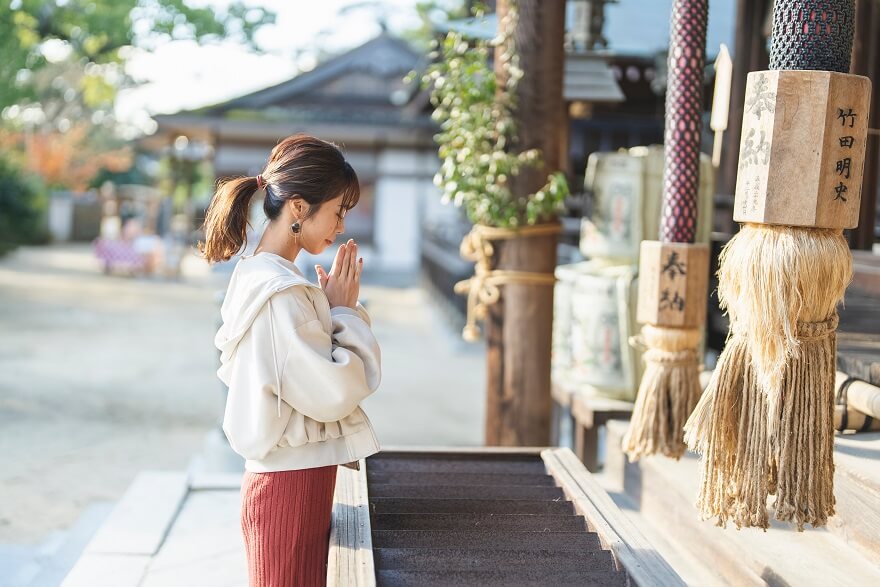
The most important thing when going to Hatsumōde is to pray.
Perform this ritual at the main hall of the temple or shrine you visit.
Pray at the shrine
- Bow once.
- Gently put the money into the offering box.
- If there is a bell in the offering box, hold the rope and gently shake it 2 ~ 3 times to ring the bell.
- Bow deeply twice.
- Clap your hands twice and then pray.
- Bow deeply once more and finish.
Pray at the temple
- Gently put the money into the offering box.
- If there is a bell in the offering box, hold the rope and gently shake it 2 ~ 3 times to ring the bell.
- Clasp your hands in front of your chest and pray.
- Still clasping hands in front of your chest, bowed deeply.
- Bow once more and finish.
Not only prayer rituals, rituals when visiting shrines and temples in Japan are also different.
Please read more in the following article so you can confidently visit without fear of being rude.
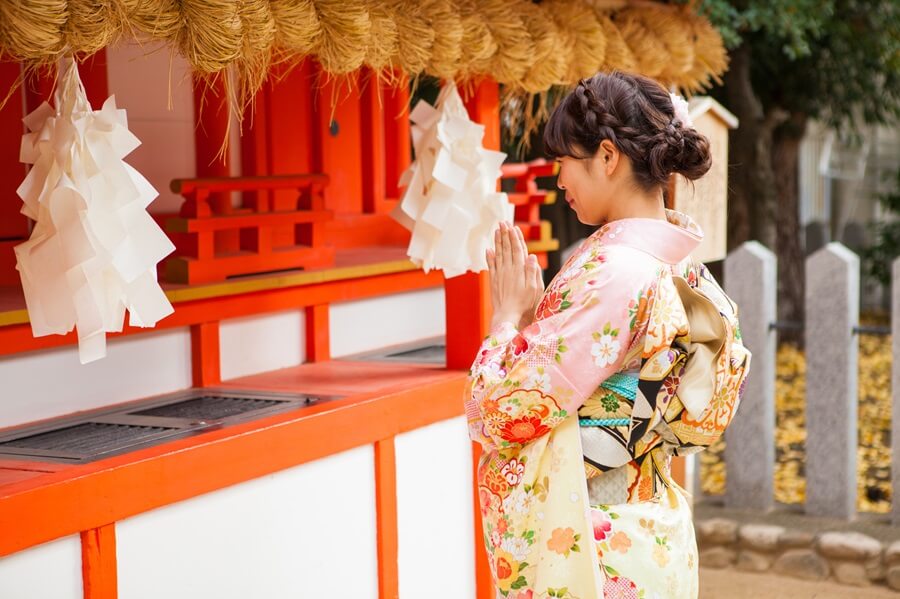
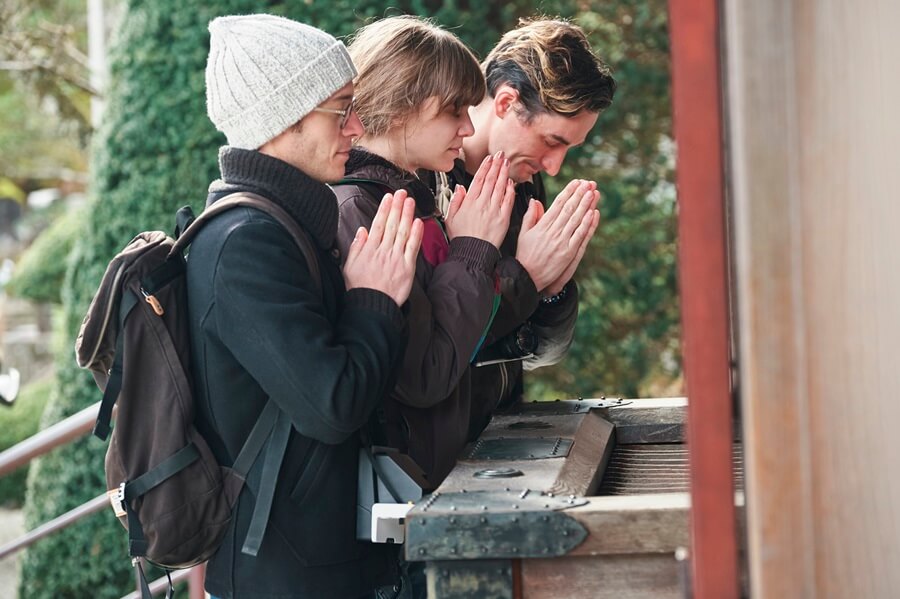
Draw an “Omikuji” fortune slip
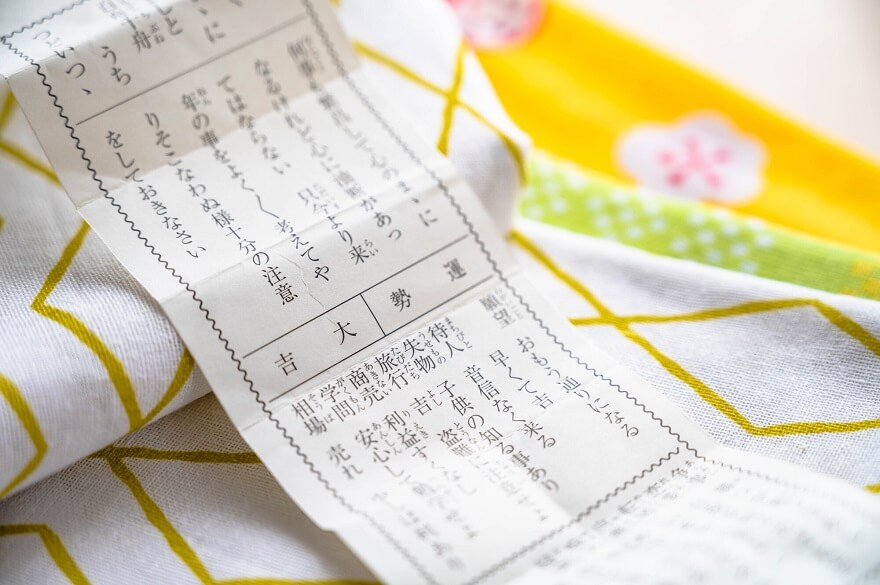
“Omikuji” (おみくじ) is a paper on which your fortune at that time is written.
Japanese people often draw an “Omikuji” fortune slip when going to Hatsumōde to predict what their fortune is this year.
Omikuji is very cheap, only about 100 yen once to draw, so you can try it like playing a game.
Buy “Omamori” amulet
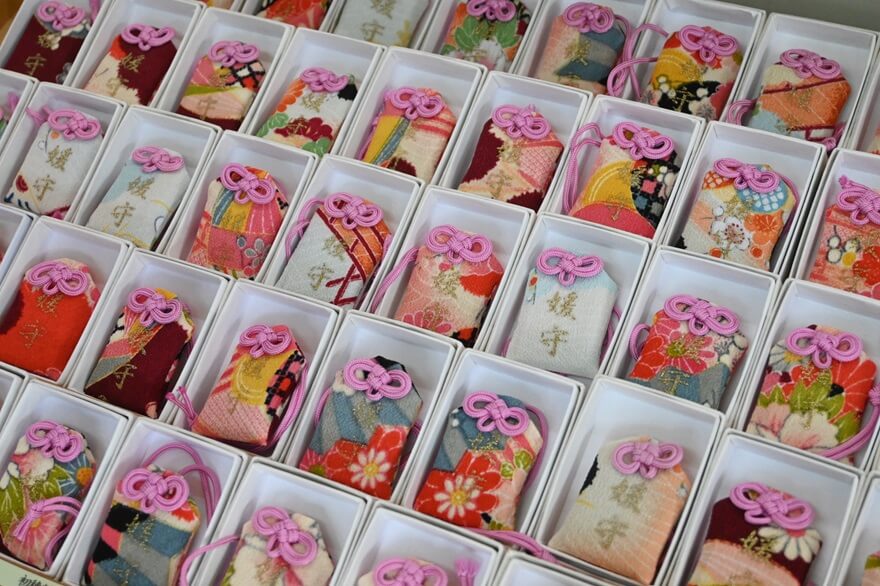
“Omamori” (お守り) is the name for amulets in Japanese.
There are many types of Omamori, such as Omamori for good luck, Omamori for success, Omamori for safe childbirth, etc.
In Japan, you can buy many types of Omamori at the same time, and not only for yourself, you can also buy them as gifts for relatives and friends.
Hatsumōde is the best time to buy Omamori, as your wishes will be granted from the first days of the new year.
Buy “Hamaya” arrows
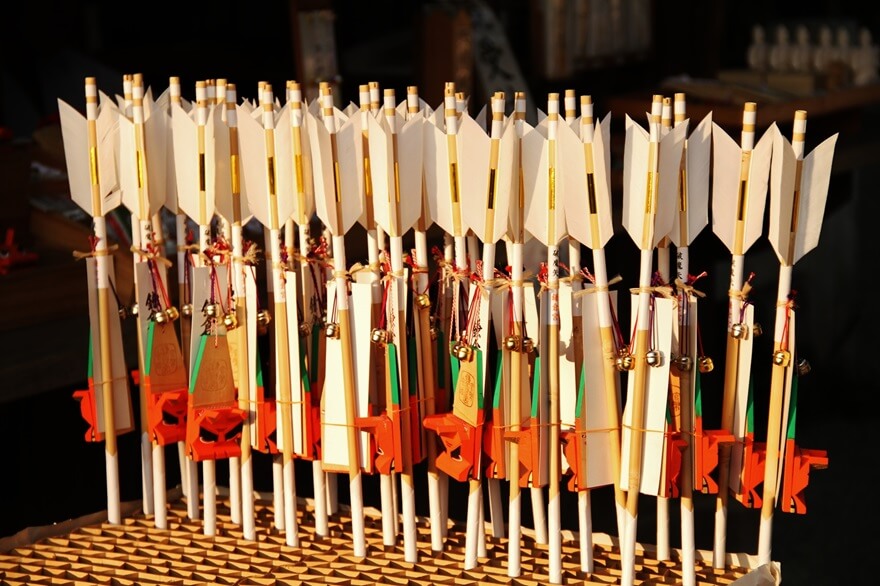
“Hamaya” (破魔矢) literally means “devil-slaying arrow”, and is said to ward off evil spirits and bring happiness.
Because of its arrow shape, Hamaya also means hitting the target, helping your wishes come true.
Traditionally, Hamaya will be decorated on the altar, however, nowadays not many Japanese families have an altar in the house, so Hamaya is moved to be decorated on the wall or at the entrance of the house to prevent bad things from happening.
Hamaya is especially sold inside temples on the first days of the New Year, so you can easily find it when going to Hatsumōde.
Write a wish on “Ema”
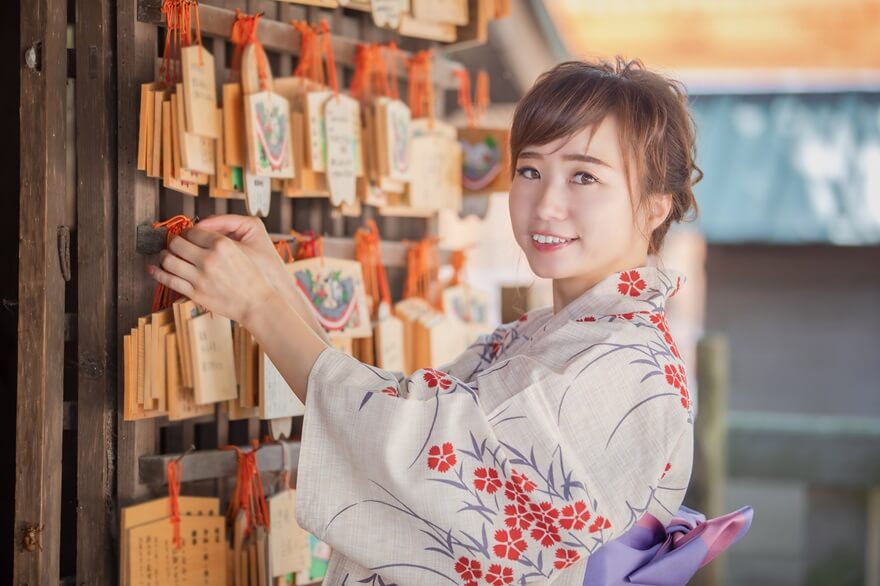
“Ema” (絵馬) is a wooden card with one side featuring a lucky image, and the other side left blank on which you can write your wishes.
The Japanese believe that by writing a wish on Ema and then hanging it at the shrine or the temple, your wish will be seen and blessed by the Shinto Gods and Buddhas.
If you’re wishing for something this year, write it down on Ema when you go to Hatsumōde.
Snack at “Yatai”
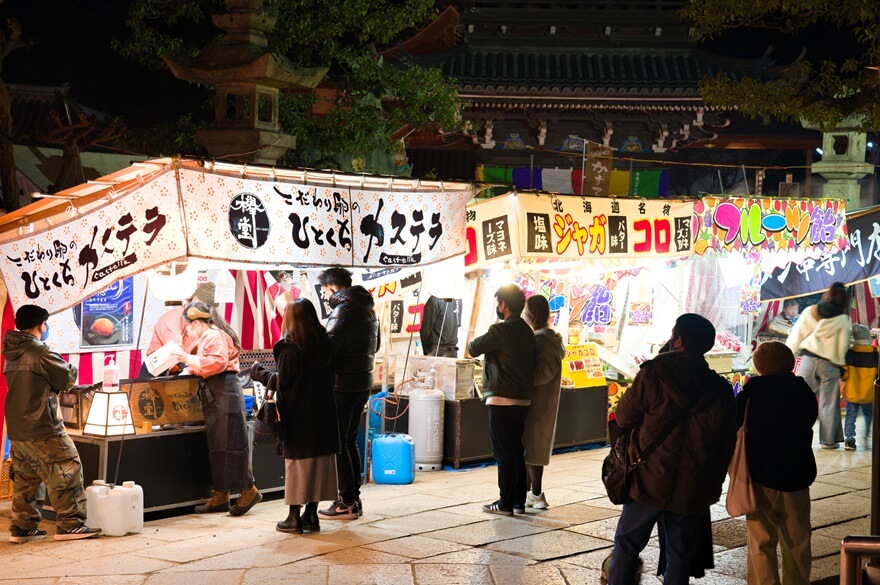
“Yatai” (屋台) are temporary stalls selling street food, often appearing during festivals in Japan.
The food sold at Yatai is very diverse, the most popular are Okonomiyaki, Takoyaki, Butter Potatos, Tonjiru soup, etc.
During the first 3 days of the year, Yatai at some temples and shrines are often open from morning to late evening, to serve visitors at all hours.
If the temple or the shrine you visit in Hatsumōde also has Yatai, then definitely try it!
Clothes when going to Hatsumōde

January is winter in Japan, so you should wear warm clothes when going to Hatsumōde.
If you plan to go to Hatsumōde at famous temples or shrines, it’s best to dress a little warmer than usual in case you have to wait to enter the prayer area.
You can also wear Kimono to take better photos.
Kimono rental shops are often open throughout the New Year so you can easily find them.
Conclusion
Hatsumōde is the custom of visiting a shrine or temple in the New Year in Japan, usually taking place from January 1 to January 3.
After praying, you can draw an “Omikuji” fortune slip to predict what your fortune is this year, or buy the Omamori amulet to pray for peace for yourself and your family.
Enjoying street food at Yatai stalls is also an interesting experience that you should not miss when going to Hatsumōde.
And don’t forget to dress warmly to enjoy the trip in the most comfortable way.


Comment